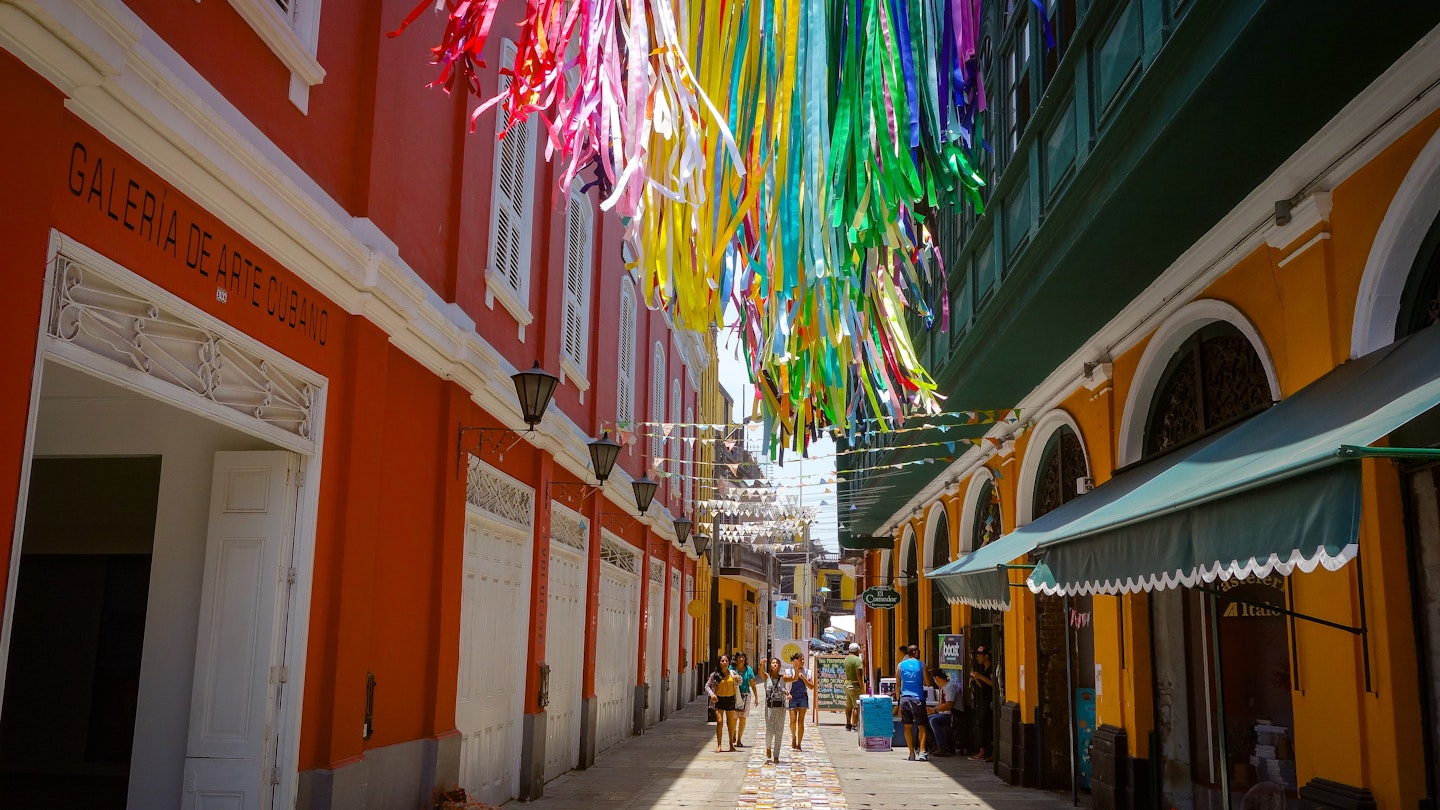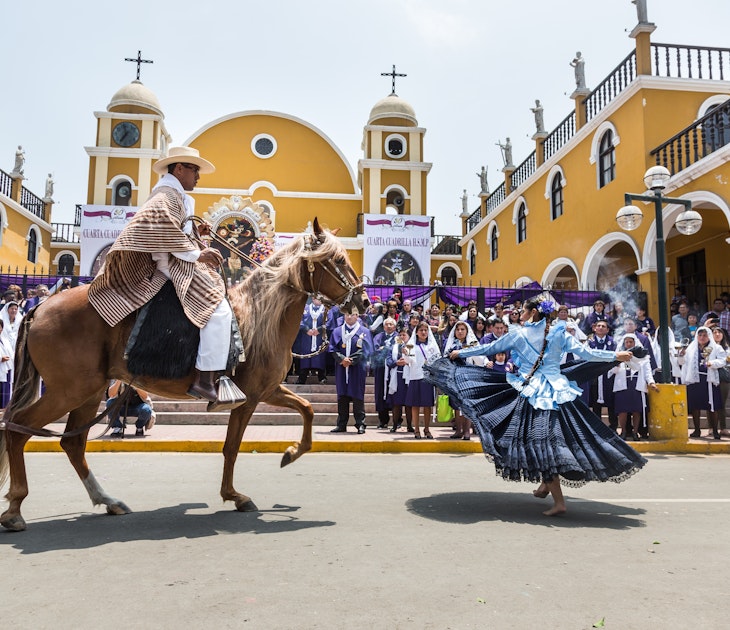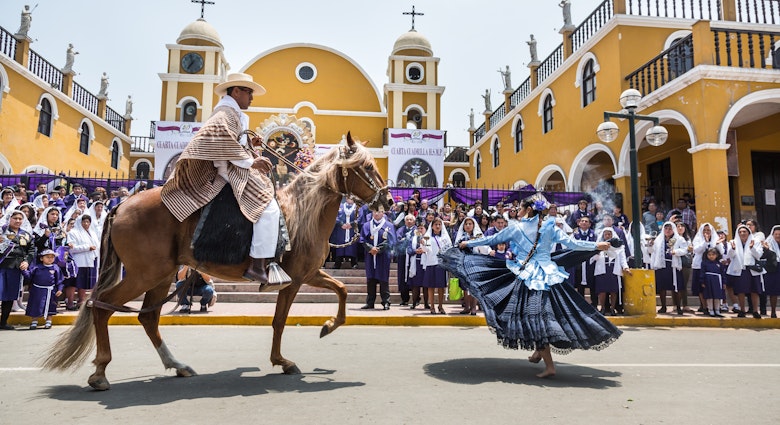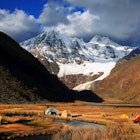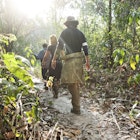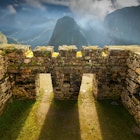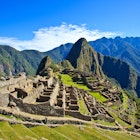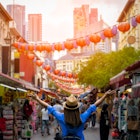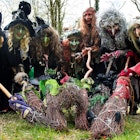Referred to as the City of Kings, Lima is a metropolitan hub best known for hosting world-renowned restaurants, but it will also delight and satisfy those with a craving for art and culture.
The capital city of Peru is immensely colorful despite its nickname Lima la gris (Lima the gray), as you will come to find after visiting any of the numerous galleries and museums. From erotic pre-Columbian ceramics to urban art with a social purpose, be sure to include a visit to these museums, Lima's very best, on your next trip to Peru.
Expect to blush at Museo Larco's pieces of ancient erotic pottery
Surrounded by a lush garden, Museo Larco rests in a beautifully restored 18th-century house in the old-school Lima neighborhood of Pueblo Libre. Founded in 1926 by Rafael Larco, a pioneer of Peruvian archaeology, visitors can walk among some 30,000 cataloged ancient pottery artifacts.
But let’s be honest: we're all most curious about the collection of pre-Columbian erotic pottery.
The assemblage of titillating pieces is divided into five sections – female body and maternity; sexual union and fertility; male body and sexual propitiation; the underworld; non-reproductive sexual union. Though you may giggle and even blush, this Museo Larco collection offers a unique glimpse into a common activity not often explored when it comes to ancient Peruvian cultures.

MALI has a wide-ranging art collection
Museo de Art de Lima (MALI) is an all-encompassing museum that showcases the past 3000 years of art in Peru in a permanent collection of over 18,000 pieces. Covering pre-Columbian, Colonial, Republican and Modern eras, MALI is an iconic museum not only for the number of artifacts and artworks but also for its dedication to conservation and restoration.
Colonial furniture, pre-Hispanic textiles and ceramics, and the photographs of Martin Chambi – one of Latin America’s first indigenous photographers and a native of southern Peru’s Puno – are just a few must-see items.
The building itself is an outstanding work of restoration, having originally served as Peru’s National Exhibition in the 19th century. As if the 10,000 sq m (107,639 sq ft) of exhibition space weren’t enough to keep you busy, MALI also houses a library, shop, cafe, and offers courses and workshops.
Get interactive at MAC Lima, the best gallery for contemporary art
An acronym for Museo de Arte Contemporaneo (Museum of Contemporary Art), the glass cube structure of MAC sits pretty at the entrance of Lima’s bohemian neighborhood, Barranco. Having opened in 2013, it is one of the youngest cultural centers on this list yet one of the best museums in Peru thanks to its spacious outdoor area and interactive exhibits.
Emerging Latin American artists as well as international names, such as photographer David LaChapelle, have shown their work at MAC. Visitors will likely tour the three showrooms within an hour, as they are rarely full nor open simultaneously. Luckily, the grassy lawn and on-site cafe make for a relaxing spot to laze away the rest of your afternoon – or perhaps ponder upon your next masterpiece.
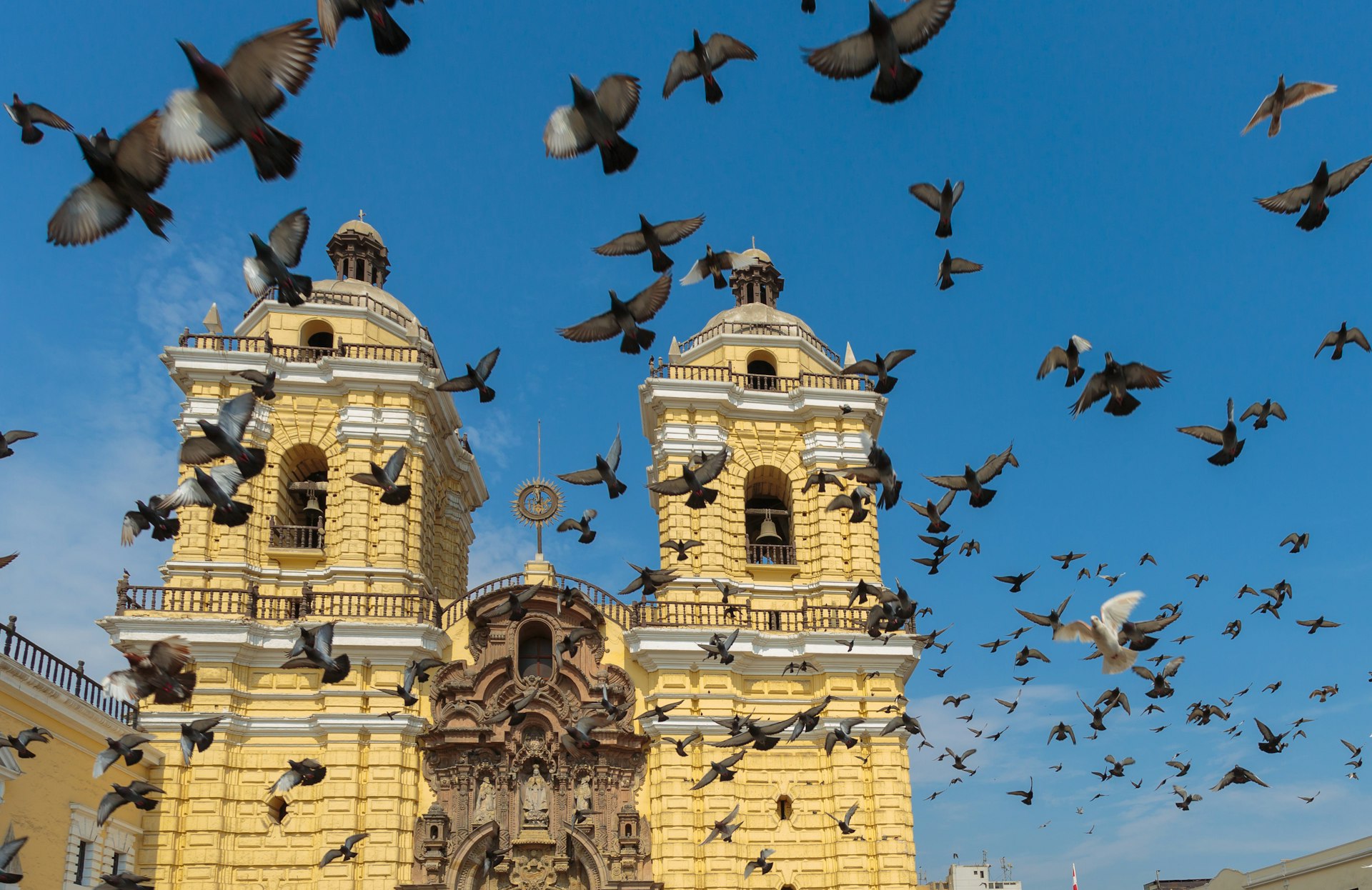
The catacombs under Monasterio de San Francisco are the city's eeriest museum
One of the oldest catacombs in South America can be found just a few blocks away from Lima’s main square (Plaza de Armas) in the city’s historic center. Situated beneath the 16th-century Monasterio de San Francisco, an underground network of pathways wind their way through what was once the capital’s only cemetery. With some 25,000 crypts, the Lima catacombs are believed to be the largest on the continent.
Forget any inkling of claustrophobia you may have and take one of the most memorable tours as you learn about the anti-seismic structure, secret passages, and the legend of the monk who still walks the hallways.
Afterward, head back to street level to tour the extensive library inside the San Francisco Convent, internationally renowned for having one of the most complete collections of books.
Lugar de la Memoria is the best place to learn about Peru's recent history
Lima’s Lugar de la Memoria, la Tolerancia y la Inclusion Social (Place of Memory, Tolerance and Social Inclusion, or LUM), provides a vital history lesson for travelers as well as locals regarding Peru’s years of terrorism that spanned the 1980s and '90s. During this time, the Shining Path, a communist guerilla group, as well as national security forces, committed countless human rights abuses that would scar the Andean nation’s social and economic well-being.
The final decades of the 20th century were especially destructive against indigenous Quechua-speaking communities in Ayacucho in south-central Peru.
Needless to say, the topic is difficult and is a lot to process. However, many LUM visitors see a positive takeaway, one that calls for unity in order to prevent another internal attack. After a tour, visitors are invited to take a moment to reflect as they gaze upon the Pacific Ocean from the museum’s Balcony of Anguish on the third floor.

Museo Pedro de Osma has exceptional religious artworks in a lovely setting
Don’t get us wrong: the vast collection of colonial paintings, furniture, and sculptures found at Museo Pedro de Osma are exceptional examples of the Roman Catholic artistic traditions referred to as Cusco and Lima schools. And the collection of silverware and smattering of Inca relics are quite interesting, too.
But the crown jewels at Museo Pedro de Osma are the facilities themselves. The museum’s founder, Pedro de Osma y Pardo built his family a French-style summer home in 1906, surely without knowing that it would one day welcome tourists who were curious to view his viceregal art collection. The original art nouveau stained glass and crystal chandeliers strung from high ceilings remain. Though located off Barranco’s main avenue, the museum’s well-cared-for gardens make you feel like you're a world away.
Unless you are keen on religious art, the exhibits themselves will take less than an hour to walk through – and you will likely find yourself distracted by the home itself, which gives a peek into what life was like a century ago for wealthy Limeños.
Monumental Callao displays Lima's best urban art
Beyond getting picked up from or dropped off at the Jorge Chavez International Airport, tourists do not often venture to Lima’s coastal region of Callao. Many locals will tell you to steer clear of the area as it has a reputation for crime and violence. In order to minimize the negative and bring positive opportunities to future local generations through the arts, the social-cultural project Monumental Callao was initiated.
Housed in a renovated multi-story 1920s building, Monumental Callao invites visitors to tour the premises that include six galleries and a constant rotation of exhibits. Urban street art can be found on display both inside and out, and tourists can even sign up for classes to learn how to work a spray can.
Walking through Monumental Callao, accompanied by a local guide, will open your eyes to another side of Lima and simultaneously uplift the community.
You might also like:
Everything you need to know before traveling to Lima
Top free (and almost free) things to do in Lima
Ultimate guide to Lima's best neighborhoods

